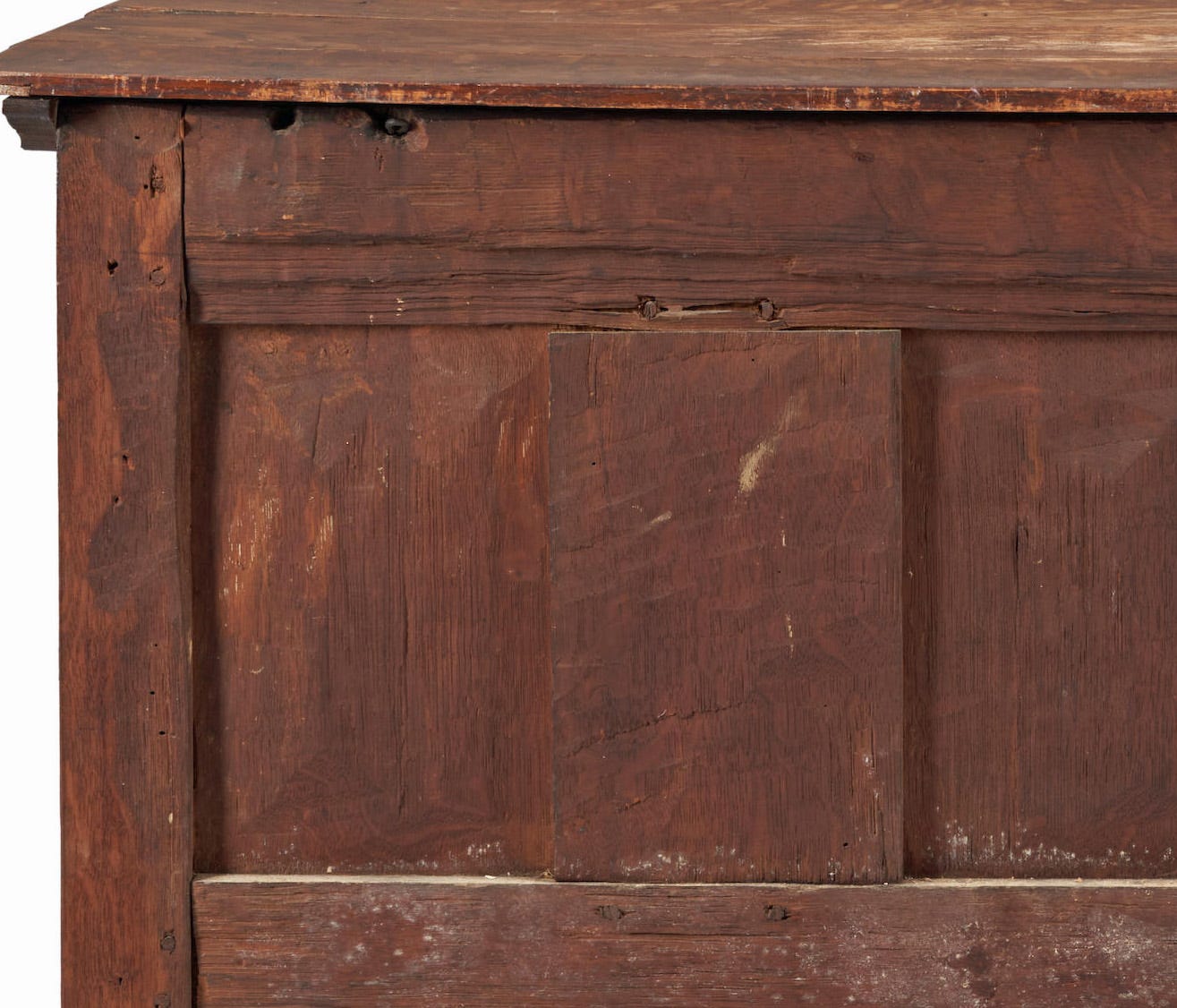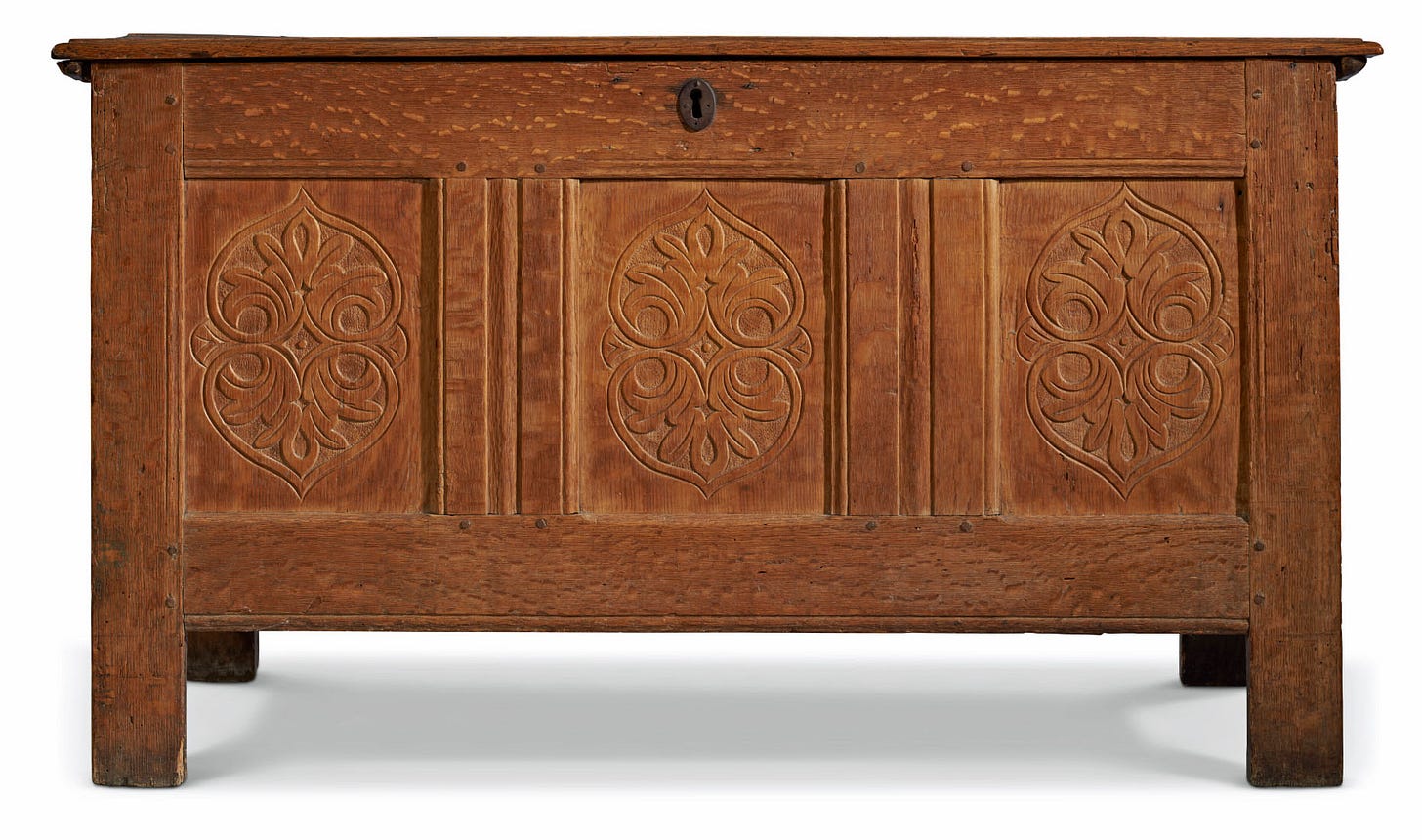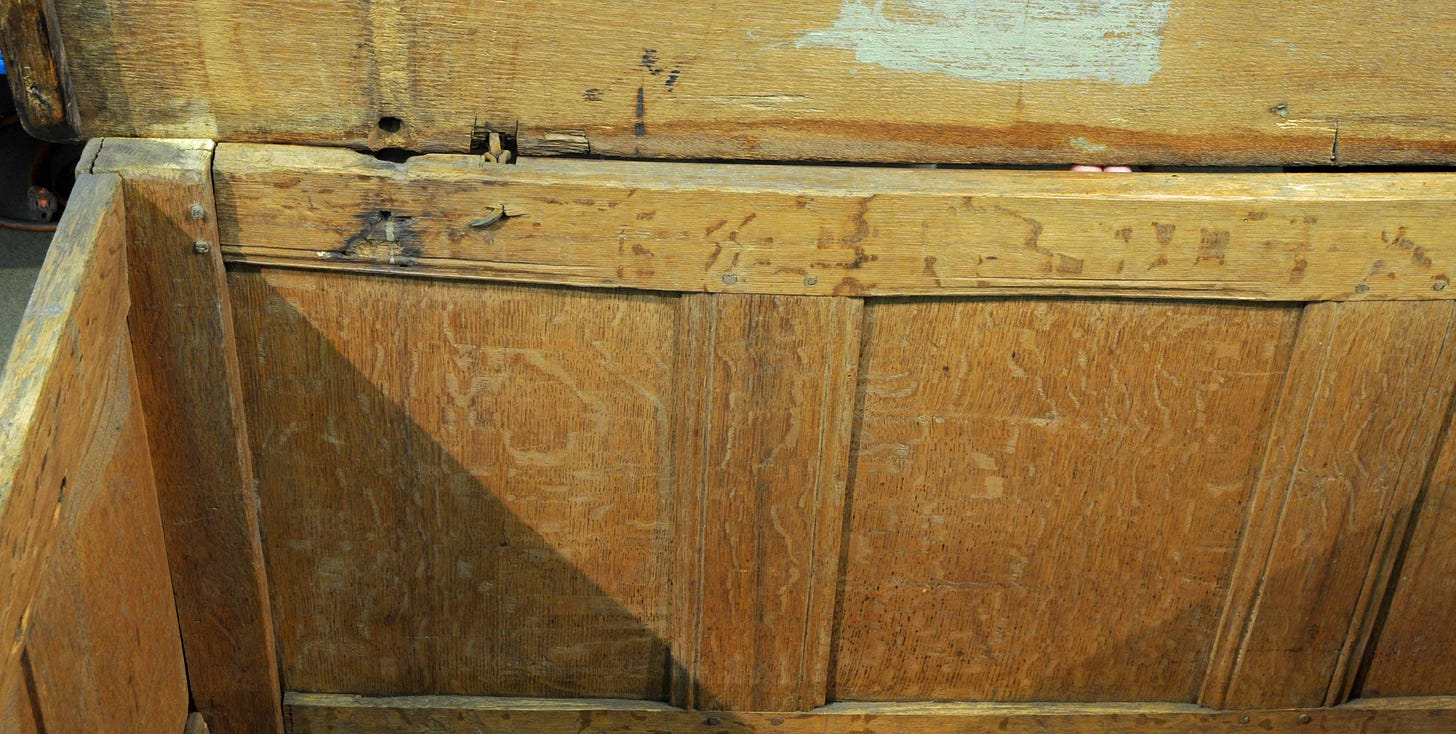I was teaching six students to make a carved oak box last week. That class is a two-in-one; the first being the carving. Then the second being making the box, seventeenth-century style. I’m so involved in that period’s work that I don’t think about it - until the students were trying to get things perfect. Then I remembered - I learned early on what I can get away with. It’s a lot.
Some of the joined work from New Haven Colony drives home the point that things don’t have to be perfect to go together and last for generations. I sometimes think of it as the anti-Krenov approach to furniture making. I’ll start with an extreme example - the back of this chest-with-drawer (above) that sold at Skinner’s Auctions in 2024.
One obvious feature is the texture, all that riven and hewn surface. Not much planing to that stock.
There’s a lot of hatchet work - especially visible on the vertical muntins. The splits between the pins that secure the muntins to the top rail can un-nerve some people. I’ve done it, I’m never thrilled when it happens, but I get over it. Several things might be at work there for those splits to occur - the mortised stock gets pretty thin there it looks like, the drawboring (the offset holes in the mortise & tenon that a tapered pin pulls into alignment) might have had too much offset. And the rear shoulder of the muntin probably wasn’t (still isn’t in some parts) in contact with the rail’s edge. Any of those factors can lead to splitting. All of them together can guarantee it.
Aside from the texture and splitting - there’s another element here that might strike the modern woodworker as “wrong.” The muntin on our left is wider than its neighbor - by a lot. I’ve not seen this chest, so didn’t measure it. But I measured a related one at Yale - its uneven muntins are on the front and differed by more than 3/4”.
This next one, same shop probably, also does that with the front muntins. That’s three at least that disregard symmetry that way. This one sold at Christie’s in January of this year - formerly Art Institute of Chicago. You probably don’t notice it until all of a sudden it hits you. Does it matter?
The back of that chest is quite similar to the previous one - oak rear panels jointed from two boards. Hewing, riving, split edges - the works. Inside, these chests are neater than this - rougher than some others.
Here’s one I photographed at Yale years ago - a bit worn, but note the molded edges inside, flat face of the panels there too. 2nd set of hinges -but the frame & panels are as they left the shop.
There’s a couple of things about these works from New Haven Colony. One is all-oak, many other joinery traditions in New England employed secondary woods - white pine, yellow pine. These guys used a lot of oak - often quite thin. Glued-up panels like we saw on the back of the chest up above are common in this work.
Keep reading with a 7-day free trial
Subscribe to Follansbee's Substack to keep reading this post and get 7 days of free access to the full post archives.








